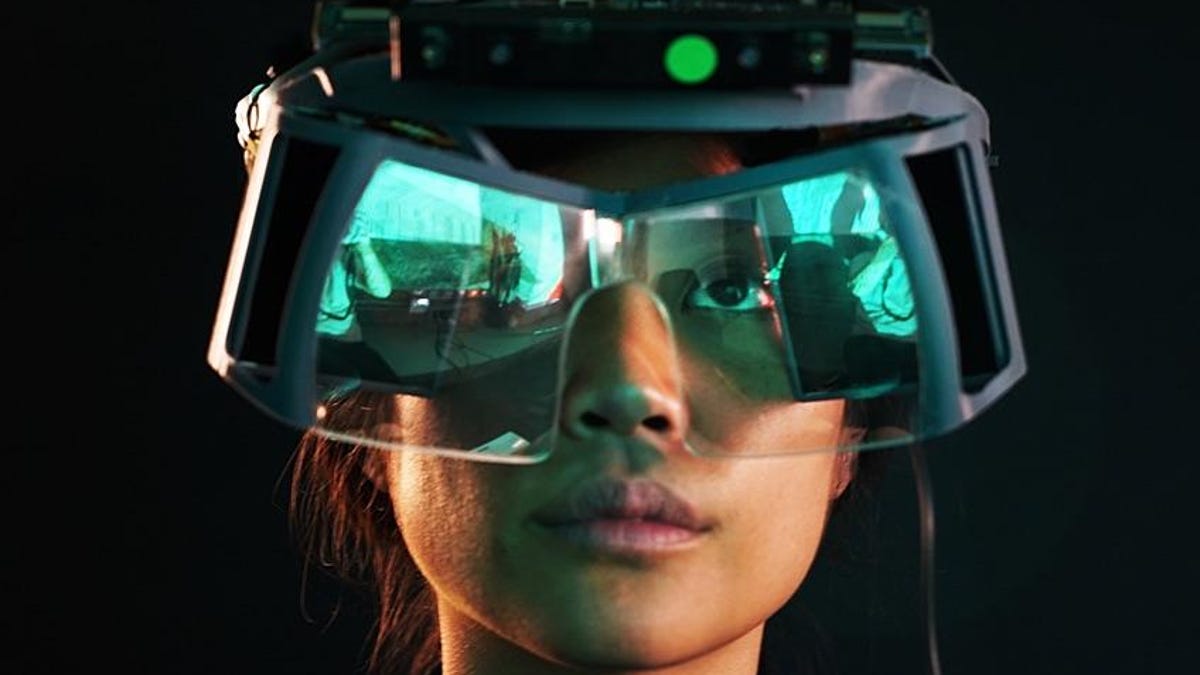Leap Motion's Project North Star could help solve the missing link in AR
No controllers needed: Will Leap Motion's open-source design help build a future of better hand gestures and even "virtual wearables"?

The Leap Motion Project North Star is looking to shake up the augmented reality (AR) market with an approach that's designed to be open source -- and affordable.
Leap Motion has always been in the business of exploring 3D hand and gesture controls, going back to the first Leap Motion accessory made for PCs in 2013. Since then, the company's developed several solutions for VR. Project North Star looks like an extension to mixed reality or AR, aiming for better hand tracking in a new wave of augmented-reality applications. It will be competing with other big names in the nascent AR field, including Microsoft HoloLens, Magic Leap and a few other rough-around-the-edges concepts.
Keiichi Matsuda, Leap Motion's creative director and VP of design, has been tweeting previews of Leap Motion's AR hand control ideas over the last few weeks, including this clever idea of a hand sprouting a "virtual wearable" interface from the side.
Introducing Virtual Wearables pic.twitter.com/LPvknKBlnO
— Keiichi Matsuda (@keiichiban) March 22, 2018
Leap Motion's announcement post paints a dramatic picture:
"As we explore this newfound ability, it becomes increasingly clear that this power will not be limited to some 'virtual world' separate from our own. It will spill out like a great flood, uniting what has been held apart for so long: our digital and physical realities.
In preparation for the coming flood, we at Leap Motion have built a ship, and we call it Project North Star."
David Holz, founder and CTO of Leap Motion, indicates that this is far from a final step: "The journey towards the hardware of a perfect AR headset is not complete and will not be for some time, but Project North Star gives us perhaps the first glimpse that we've ever had. It helps us ask the right questions, find the right answers and start to chart the course to a future we all want to live in, where technology empowers humanity to solve the problems of today and those to come."
An earlier prototype of the headset and its funky angled displays.
Project North Star is designed to be a lower-cost device to make, costing "under one hundred dollars to produce at scale," with hardware that includes two angled 1,600x1,440 120Hz displays creating a 100-degree field of view and a 180-degree hand-tracking sensor. Leap Motion promises to make the hardware design and software open source starting next week.
That "under $100" production price sounds ambitious, but also keep in mind that won't be what the device of the future would actually sell for. The device isn't standalone, either: it's an HMD that currently is made to plug into a PC, but could work with other external devices, too. But the point being, don't expect it all to be in the headset (Magic Leap's upcoming headset uses a belt-worn PC, too). And it could very well end up being a technology that finds its way into other AR headsets, much like Leap Motion's controls have ended up in several mobile and PC VR prototypes. It's a reference design, of sorts.
A schematic of the design. The Leap Motion outward-facing hand sensor rests above the displays.
What's most interesting about North Star is its focus on more evolved blending of controls into hand motions, and even allowing visual interfaces to blend with real fingers and hands. And that's where North Star could maybe lend the entire AR landscape some help.
I've thought about how devices like smartwatches could end up being intriguing VR controllers, and could even sprout augmented interfaces in a similar manner while wearing an AR headset. Leap Motion's designs are accessory-free, made to work without any external controller at all. AR definitely needs help in making better controls, and nailing down a future gesture language that works. Project North Star could be another intriguing step to watch.

